The Reinvention of Whitby.

Britain's consistent number one charter fishing port. Quite an accolade, and quite a bold claim to make which takes some pretty strong backing up. I can think of a few venues that would most certainly be in the running, and right up there with them would have to be the North Sea port Whitby. I'm confident that few boat anglers would seriously argue with that. But, even a venue worthy of that level of status is not immune to its ups and downs on occasions as has happened in the past. The trick is in Whitby's case, that in climbing back up after one such a blip, it has completely re-invented itself in the process to the extent that anglers who fished it back in its halcyon days of the late 1970's through to the early 1990's would barely recognise the fishing in terms of approach. Tactically, it has had a total face lift, and one of the main architects here has been 'Sea Otter 2' skipper Paul Kilpatrick.
I remember fishing Whitby in the days when angling cobbles left the harbour here, and for that matter most other ports along the Yorkshire coast, loaded up with sacks of fresh mussels which the skipper would be relentlessly shelling for bait throughout the day. Long drifts over hard ground with bait were the order of the day back in those early years. Then the offshore wreck fishing exploded onto the scene with jiggers and muppets replacing bait, and huge Cod and Ling hauls, including records, replacing the more mundane catches on the mussel closer in. As a result, Whitby became a place of pilgrimage and rightly so as it added the Coalfish record to the Cod and Ling titles it had already claimed, and life in that corner of the North Sea had never looked more rosy.
For whatever reason, the mid to late 1990's saw a decline in fortunes. Less fish, and certainly less big fish out over the wrecks, probably due to a combination of angling as well as commercial pressure. But more to the point, less Cod generally in the North Sea, with all sorts of claims and counter claims being bandied about, and consequently less people fighting over the available space on the once bustling charter fleet. A point at which lesser venues might have started to spiral into decline. But not Whitby. And especially not Paul Kilpatrick who was of the mind set that when one revenue stream dries up it's time to look for another. A philosophy which has not only helped Whitby bounce back now that the Cod have returned in good numbers, but has also extended the fishing season right through into the winter when in the past boats would have laid up in port.
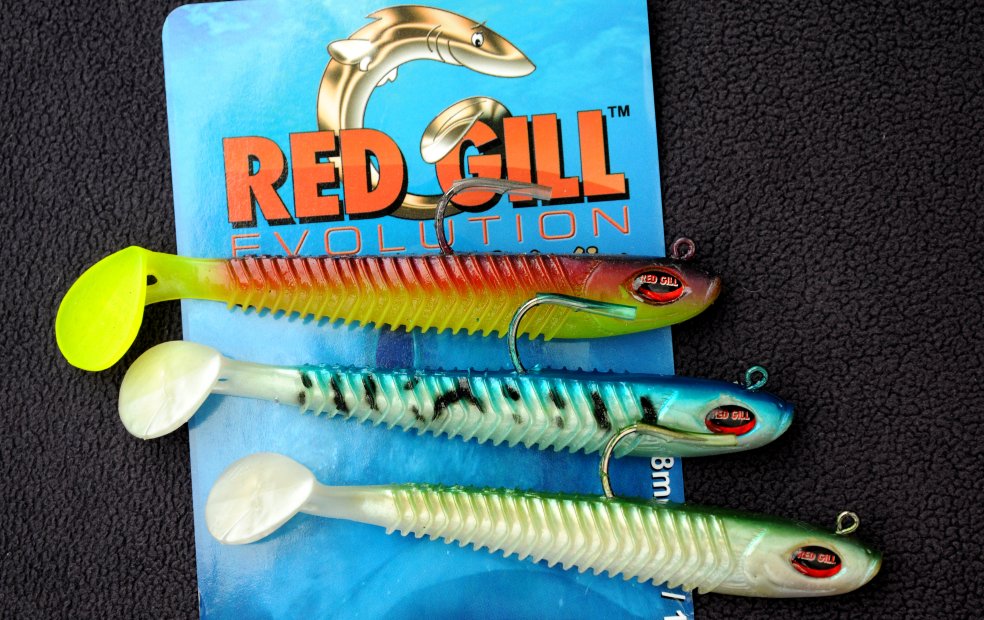
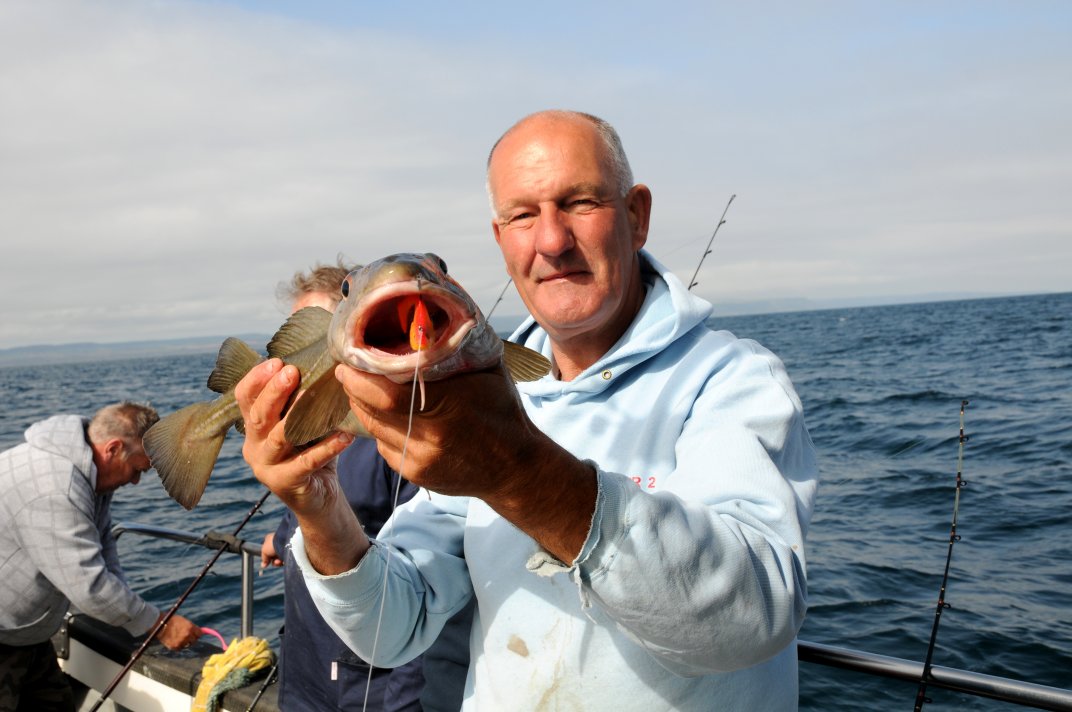
Initially, with less fish on the wrecks, the old traditional hard ground areas were looked at. Whitby looks out onto a patch-work quilt of deep lying reefs interspersed with sand. Perfect Cod country. But not perhaps best suited to the jiggers and muppets which had become almost obligatory out over the deep water wrecks. There had to be other ways of getting a result inshore both over the ground and the huge scattering of close to wrecks. That method turned out to be shads; soft bodied fish shaped lures with paddle tails to make them 'swim' realistically, offered in a wide range of colours, not unlike the traditional Redgill lure so popular over the west country wrecks for Pollack and Coalfish in the days before the Whitby boom. But there the similarity ends.
I was out with Paul aboard 'Sea Otter 2' in early September, the day after they'd had a burster on decent Cod during a year when at times they were afraid to tell the world about both the quality and quantity of Cod coming to the inshore boats for fear of triggering unwelcomed attention. Charter anglers regularly joke about skippers reputedly saying "You should have been here yesterday". In this case, Paul had the evidence in terms of date marked photographs on his mobile phone to back the rhetoric up. And not surprisingly, that same wreck was to be our starting point. But first things first. As I've said, my past experience of Whitby was the jiggers and muppets era, and my only experience of fishing soft lures was over the Plymouth wrecks. So a crash course in Whitby shadding was urgently needed.
Redgills over channel wrecks are tied to a 12 to 20 foot trace attached to a wire boom which is lowered to the bottom then slowly wound up through the water column until it reaches the feeding level of the Pollack, which could very easily be as high as mid water. Shadding for Cod could not be more different. Maybe 6 feet of 30 lbs mono is tied to the middle loop of a three-way swivel with the lead attached to a foot or so of mono from the bottom loop. That's it. Simple, effective, and quick to knock up as a replacement after a hangup. But instead of cranking the reel to give the lure its swimming action, the idea is to keep it as close to the bottom as possible at all times for Cod and Ling. With the reel out of gear and the thumb very firmly on the braid loaded spool, the rod is raised then dropped rather like when jigging, but with the spool allowed to give whatever line may be needed on the drop stroke to ensure the lead touches bottom every time, constantly keeping the lure in the feeding zone.
Everything happens fast fishing these inshore wrecks, and that has to include learning the ropes and being ready when the call comes to drop down. Not exactly the largest of targets, if you don't get the lures in place before the wreck starts to show on the sounder you could very easily miss a drift, a fact not lost on me when a hangup results in the loss of a terminal rig. I would most certainly be a lot more ready to deal with the situation next time around. Fortunately I had taken along two outfits, which is something I always do. You never know when a reel might pack up or a rod gets damaged, and just to reinforce that fact, one of the lads at the stern had the end section of his rod break completely off while dealing with a hangup. But more importantly, it offers breathing space between drifts to be making sure you always have at least one outfit ready rigged, even if you haven't just parted company with a rig. And to speed things up further, a dozen of so pre-tied three way swivels rigs wouldn't go amiss waiting for a lead and a lure to get you back in business to maximise the opportunity.
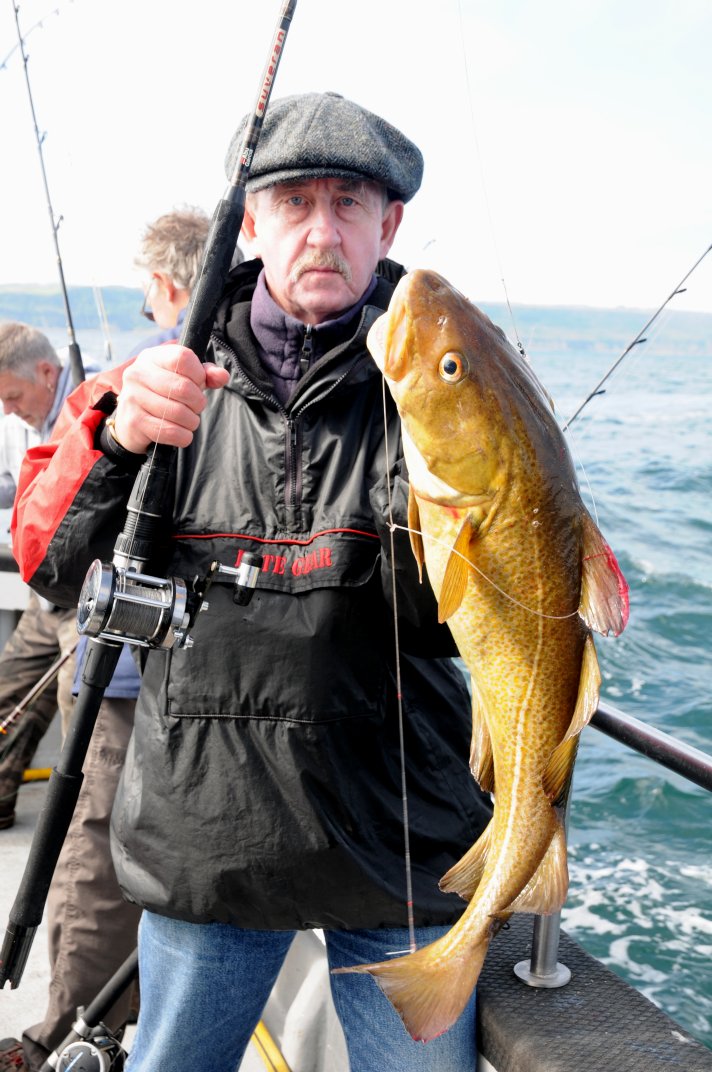
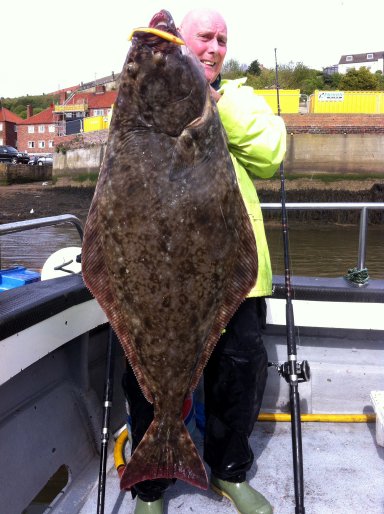
Lure colour and size can also be important factors here. Obviously, ambient light and prevailing water clarity will both have a say as to which, if any of the options is most likely to tempt fish. As a general rule, lures in the 4 to 6 inch length range work best with colour combinations including red, yellow, green, blue and white being the regular favourites. I always like to watch what the locals, or better still the skipper choose. Paul is one of those skippers who's out on the cabin deck every drift with his own rod, and believe me, he can knock some fish out over the day. And like the rest of us, he also suffered hangups and tackle losses. Yet every time he came back with the same choice of lure. A chunky shad which looked to be about 4 inches in length coloured red on the top and bright yellow below. A slightly less garish rhubarb & custard is another popular colour combination. But I also had fish on a green split tail lure while other people caught on blue & white. And in virtually every case, once a fish had decided it was having it, that lure was gulped right down in one hit, with most of the Cod, and also quite a few Ling taking them right down to the back of their throats.
Paul had told us to phone him the evening before, firstly for a weather update to make sure the trip was on, but also to get the most up to date information on what to bring along in terms of lures or bait. Obviously, when the water is clear, soft swimming lures score best. Get a little bit of colour in there after a spell of weather and it's over to bait, with many days where it can also go either way. So we took along some un-washed Calamari Squid, plus a few packs of nicely hardened up live blacklug left over from a beach fishing trip a couple of days earlier. Lug had not been one of the recommended baits. But as we already had it, no point in wasting it, and it proved a useful addition as Charlie Pitchers showed by knocking out a few nice Cod on worm-squid cocktails while taking a break from working the lures. Mackerel feathered up just outside the harbour was the other fresh bait option we had which is good for the Ling.
Ling can sometimes get over-looked when you get distracted by Cod fever. But as Paul kept reminding us all, there are some very big Ling in over these wrecks, particularly late in the summer season, and that we should at least be giving these a shot. And here again, trace construction is both simple and important. Simple in the sense of it being a single 12 to 18 inch dropper immediately above the lead armed with a swivel and a large strong hook: important in that if it's not tied up from suitably heavy mono then the Ling's sharp teeth are going to make short work of it. Paul had a monster spool of 100 lbs bs mono specifically with this job in mind, and while it might look OTT and crude, the Ling won't mind believe me. Load the hook with fresh Mackerel making sure the point is well exposed then send it down, again ensuring it's in contact with the bottom at all times. One tip I did find useful was that if you do get a hangup with the lead, give it slack line, because sometimes a fish will still take the bait and pull it out of the snag. This is what I was doing when I came up with the best Cod of the day, which on Mackerel was a pleasant surprise.
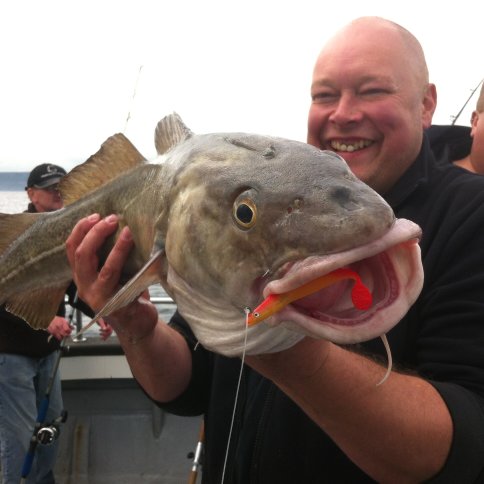
So far, all the talk has been about drift fished lures and baits for Cod and Ling, but as a hinted earlier when talking about Whitby reinventing itself and producing the goods over a longer season than previously, there is more to the potential here than a lot of people might realise. Earlier this year, and not for the first time either aboard 'Sea Otter 2', or for that matter some of the other boats, a Halibut hit the deck. Not just any Halibut. This one, caught by Barry Kemper, turned the scales to 53 pounds which is a good deal better than the norm. A few Halibut are caught here every season, and if the truth be known, probably more still are hooked and lost. I say this because as Paul commented, unless the drag is set to protect the line should a sudden fast hard hit from a Halibut come along, you won't have time to adjust it in play and the fish will usually be gone along with the lure. Even with the smaller to middle range fish. So in the months between April and June, which is when most of the Halibut seem to be hooked, it pays to be aware of this fact. Later in the summer when the Herring are about in good numbers, the extra abundance of natural food tends to reduce the chances of an encounter with one of these super-sized flatfish.
Another recent inclusion to Whitby's rod caught species list is the Porbeagle Shark. Porbeagles have long been known to swim these waters. The day before my visit which produced that bumper haul of Cod I mentioned earlier, not for the first time this year, a Porbeagle was up around the boat biting off hooked fish on the way in. Some efforts have been made to locate and specifically target these Sharks with varying degree's of success. Like anything new, it will take time to understand and tap into the potential more effectively. But if no efforts are made, then it will remain neglected. So somebody needs to invest the time, money and effort. These sharks are most certainly there and of good size with fish up around the 400 pound mark on the cards. But for now, a potential for the future I guess.
Finally, the strand that has extended Whitby's fishing season, and another potential to come from the pioneering work done by Paul Kilpatrick and the 'Sea Otter 2' parties resulting from the dip in form suffered by the charter fleet which has since been well and truly condemned to the past as the fishing has bounced back. Uptide fishing. For years, Whitby and drift fishing have gone hand in glove. Deep water close in over a patch work of hard ground has pretty much seen to that. But over the back-end and winter months, the same stamp of Cod can also be found in the shallower water closer in to shore, where fishing baits well away from the boat anchored by a 6 ounce grip lead on the bigger tides produces some outstanding hauls of fish. So much so that the town now has a regular uptiding festival to mark the start of the switch from the deeper water to inshore, making the fishing here a much more rounded affair overall.